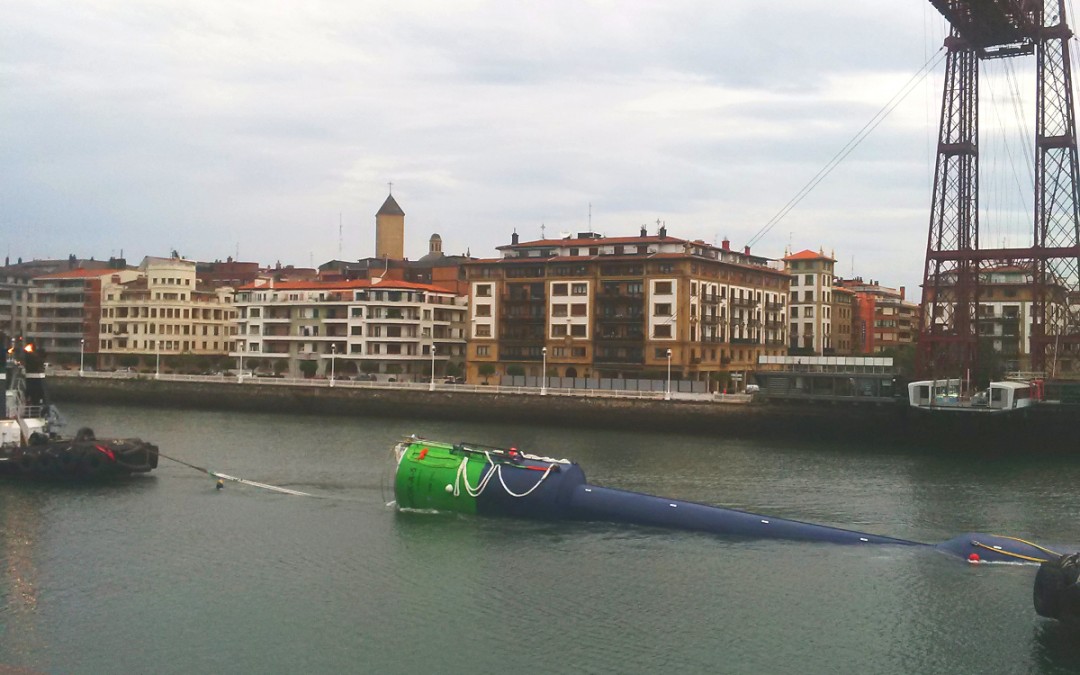The Basque company Oceantec Energías Marinas, promoted by TECNALIA Corporación Tecnológica and Iberdrola throught the Perseo risk capital programme, deployed yesterday its first Wave Energy Converter (WEC) at the Biscay Marine Energy Platform (BiMEP), sited near the village of Armintza-Lemoiz (Bizkaia).
The transport to site operation of the WEC, so-call MARMOK-A-5, started early in the morning of October 12th and was towed out along Bilbao river from the Navacel premises to BiMEP. The deployment operations took all day as planned. On Thursday 13th, the commissioning activities will be started.
Since 2012, Oceantec Energías Marinas has been working on the development of its own wave energy conversion technology. The technology is a point absorber based on the Oscillating Water Column (OWC) principle. MARMOK-A-5 resembles a large floating buoy of 5 metres in diameter, 42 metres in length and 80 tonnes weight. The generating system comprises two turbines located in the upper part of the device with a rated capacity of 30 kW. This device is almost entirely submerged in the sea, except for the floating head
The energy is captured thanks to a water column created inside the central structure of the buoy which is driven like a piston by the to-and-fro movement of the waves, compressing and decompressing the air in a chamber at the top. The air is expelled out the top where it is harnessed by one or more turbines, always rotating in the same direction, which in turn drive an electricity generator.
Following the successful testing of this low power WEC, it will be started the design and manufacture of the full scale device.
The technology development has been supported by the Basque Energy Agency under a Pre-commercial Procurement Contract. The testing activities of the WEC are also part of the European project OPERA (‘Open Sea Operating Experience to Reduce Wave Energy Cost’). OPERA coordinated by TECNALIA and Ente Vasco de la Energía, will develop technology to enable a reduction in offshore operating costs. It will pave the way for a 50% long term reduction in costs, thus accelerating the establishment of international standards and reducing technological uncertainties and technical and business risks.


